Cyclist
Big Ride: Monte Grappa, the giant of the Giro
Professional cycling has long been dominated by talk of ‘attacks’, ‘battles’, ‘pain’ and ‘suffering’, and there’s a place in northern Italy where they have experienced their share of all those things in both bike races and wars. Bassano del Grappa’s bloody history isn’t hidden from view.
Just walking around the town you’ll notice the bullet holes from two World Wars that still cover the buildings next to the Ponte Vecchio, and when you look up you’ll see the hulking mass that serves as a reminder of battles past and, if you’re in town for a ride, of suffering to come: Monte Grappa.
I don’t need the mountain to remind me of what I’ve signed up for. Starting today’s ride at the headquarters of Basso Bikes, just outside of Bassano, I’m told by several members of the team that I’m in for a tough day in the saddle. Perhaps the most telling revelation is that, despite living and working at the foot of one of the world’s most famous climbs, they each only ride up it fewer than a handful of times a year.

My ride partner for today is Asja Paladin, a former pro road racer and current Basso employee. Her sister is Canyon-Sram’s Soraya Paladin and her boyfriend is Jacopo Lahbi, the man who during Covid took on all ten road routes up Monte Grappa in one ride – that’s 455km, 16,500m of elevation and 41 hours on the bike. So it’s safe to say I’ve got the perfect guide for my own attempt.
Our plan is to replicate the ascent of Monte Grappa that will feature in the penultimate stage of this year’s Giro d’Italia, starting from Semonzo at the southern foot of the mountain and returning to Bassano del Grappa where the race will end. The pros will have to do the climb twice on the stage. For us, I’m sure once will be more than enough.
The easy part
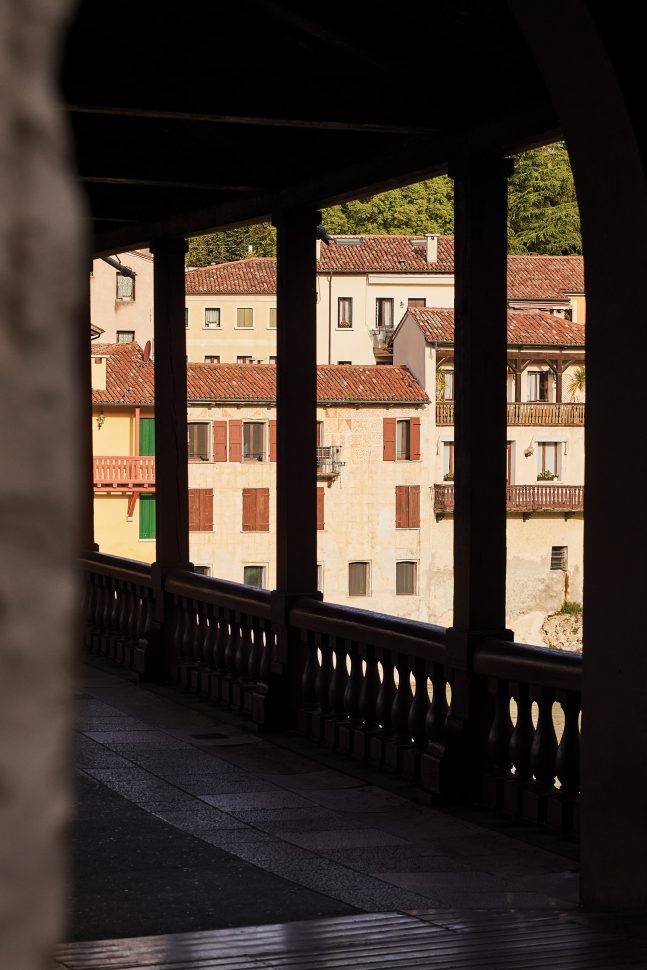
The first part of the ride is gentle and flat, giving Asja and I just enough time to get our legs spinning before we reach our first stop after 11km in the cobbled square of Asolo for coffees and cornettos.
When the Giro comes to town the peloton will head to Semonzo straight down the main road, which isn’t the nicest ride when you don’t have the luxury of closed roads, so Asja takes us slightly off-piste, including a short gravel road and a tight brook-side footpath. I’ll take that over a close pass any day.
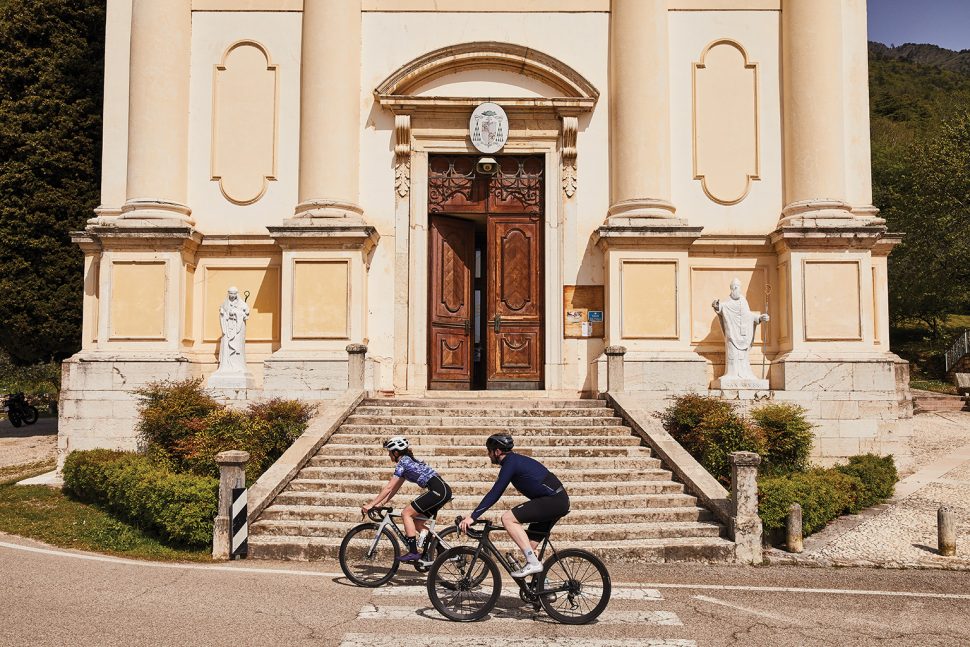
Our next quick stop comes just 10km from Asolo in the town of Possagno, where a brief detour takes us to the Tempio Canoviano, a massive temple on a hill just above the town, though it’s dwarfed by the mountains behind.
It’s an impressive sight, designed by sculptor Antonio Canova at the beginning of the 19th century and based on Rome’s Pantheon. Apparently Canova paid for most of it himself because he wanted to be buried there after his request to be buried at the Pantheon was turned down.
With my culture levels and bidons topped up, thoughts turn to Semonzo. The mountain is staring us down, and the clear day means there are a bunch of paragliders hovering above the road we’ll soon be riding up. It takes about another 10km to get to the right turn that marks the beginning of the climb, and as we arrive the bell in the local church begins to toll rather ominously.
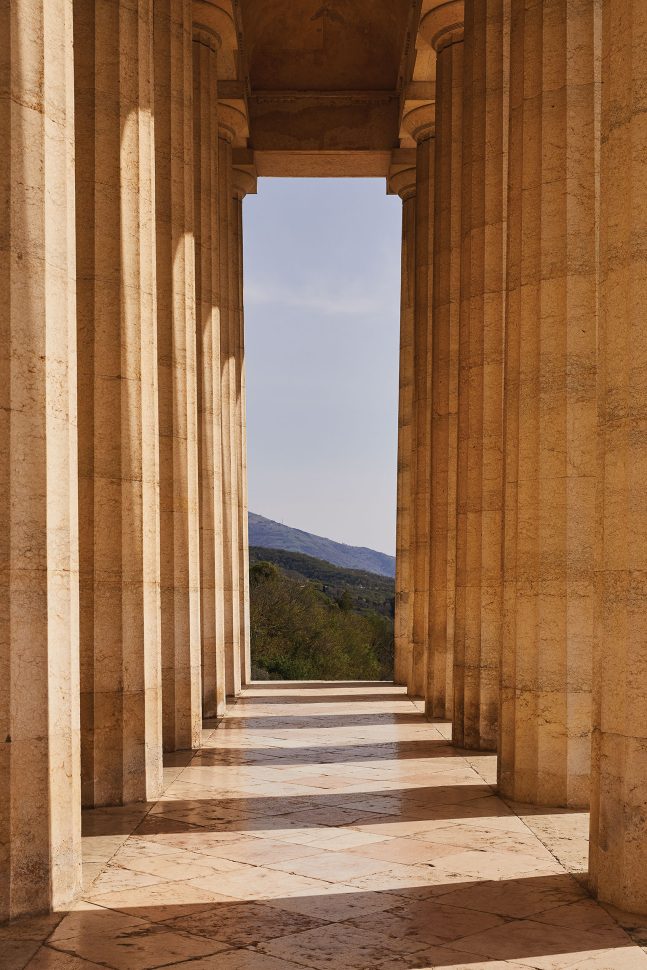
This route up the mountain is 19km long with an average gradient of 8.1%, but I’ve been told it starts hard, has an easier middle section, and ends hard. The first hard part is enclosed by trees and heads upwards steeply via a long set of 16 hairpins. My legs are relatively fresh, so while it’s not easy, I’m not suffering yet.
Thanks to the trees, there isn’t much of a view, but a pair of paragliders who’ve managed to tangle themselves in the branches – and the rescue team trying to help them out – provide a welcome distraction from the increasing burn. The gradient hovers around the 8-9% mark for the first 10km of the climb, and by the time it levels out briefly my legs are throbbing with the effort, so I use the flatter ground as an excuse for a breather and a handful of Haribo.
The relentless mountain
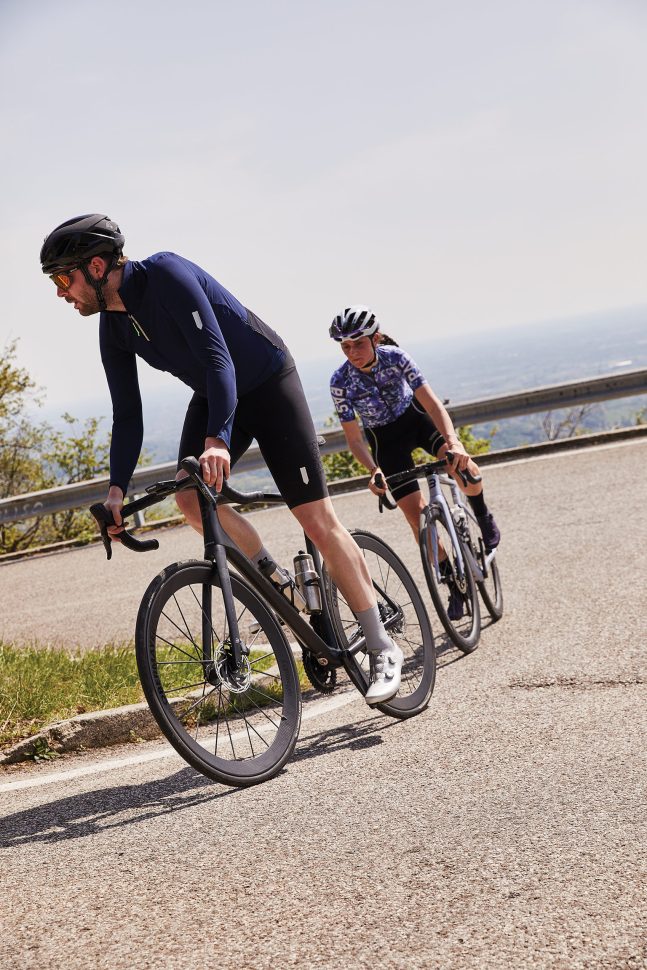
On the restart I take the opportunity to lower the pace. Asja adapts seamlessly to the slower speed, doing a good job of reining in her natural inclination to sprint off up the slope like a gazelle.
The road emerges onto an open green space with rolling hills covered in luscious trees and a large pond to our left. This is Campo Croce, a popular spot to stop for hikers, gliders, mountain bikers and any other tourists who find themselves on the mountain. For me, however, it’s crampo Croce – as the road starts to tilt upwards again I can feel the tell-tale tightening in the back of my thigh. It’s not great timing, but I’ve got no choice but to fight on.
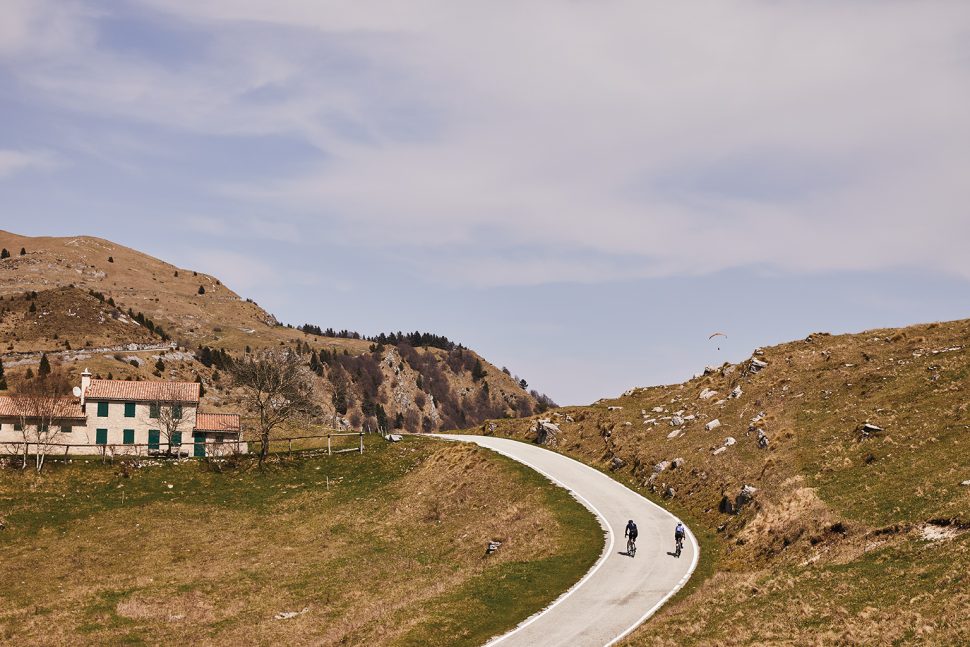
The climb just keeps getting steeper, flirting with the mid-teens, and for some reason I’ve convinced myself it can’t last long. But it can. It goes on and on and on and on, to the point that I decide to slow it down further with some weaving back and forth across the road.
We emerge onto another open section on the edge of farmland that looks gently rolling, but the gradient remains unrelenting. It’s hard to get a sense of the height we’ve gained as we have lost the views down to the valley and are now surrounded by the sea of greenery that is the Grappa Massif.
Eventually I see what must surely now be the end of the struggle. The road crests next to a house and the view I’ve been waiting for reveals itself in all its glory. Below us, stretching into the distance is a huge, flat expanse. This mountain is the gateway to all the others; it’s the first true elevation northwards of San Marino and we can basically see to Venice.

Looking the other way, we can see the refuge at the mountaintop. It feels almost close enough to touch, but it becomes painfully obvious that there’s still some brutal climbing to come before we can actually rest.
The gradients are back in the teens again and I try to maintain a steady pace to conserve energy. Once we take the final turn off the road towards the very top – something the pros won’t be doing at the Giro – I know I’ve done it, and Asja has promised there’s food on the summit, which is all the motivation I need to give it a good push.
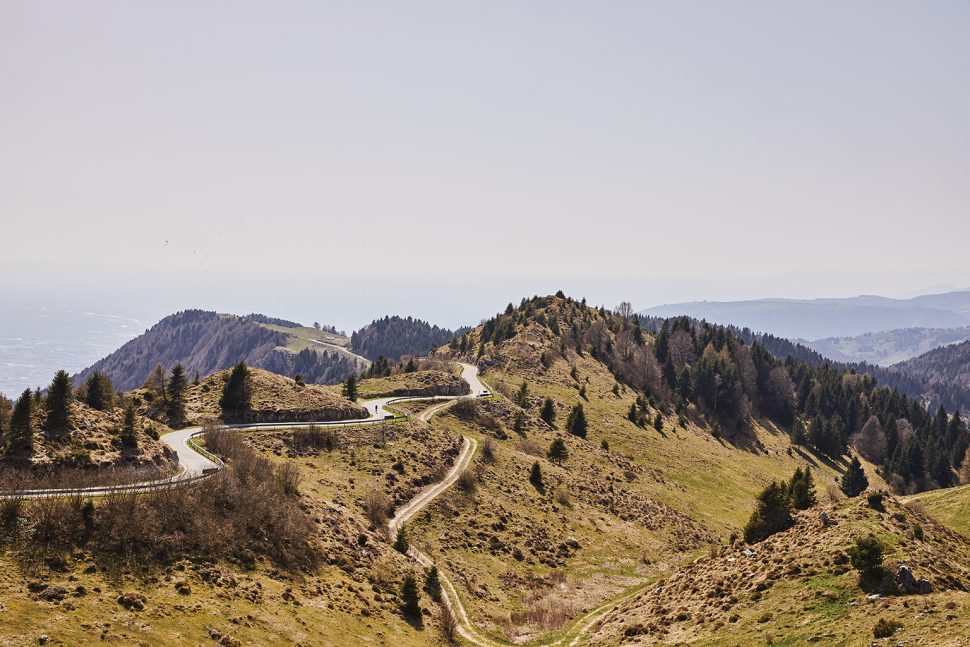
Finally, after what feels like a lifetime, we arrive at Cima Grappa, the summit of Monte Grappa, and there is no more climbing to be done. From here I can look out towards the Dolomites in the east and towards the Alps in the west, and yet the view from the rifugio is not the star of the show.
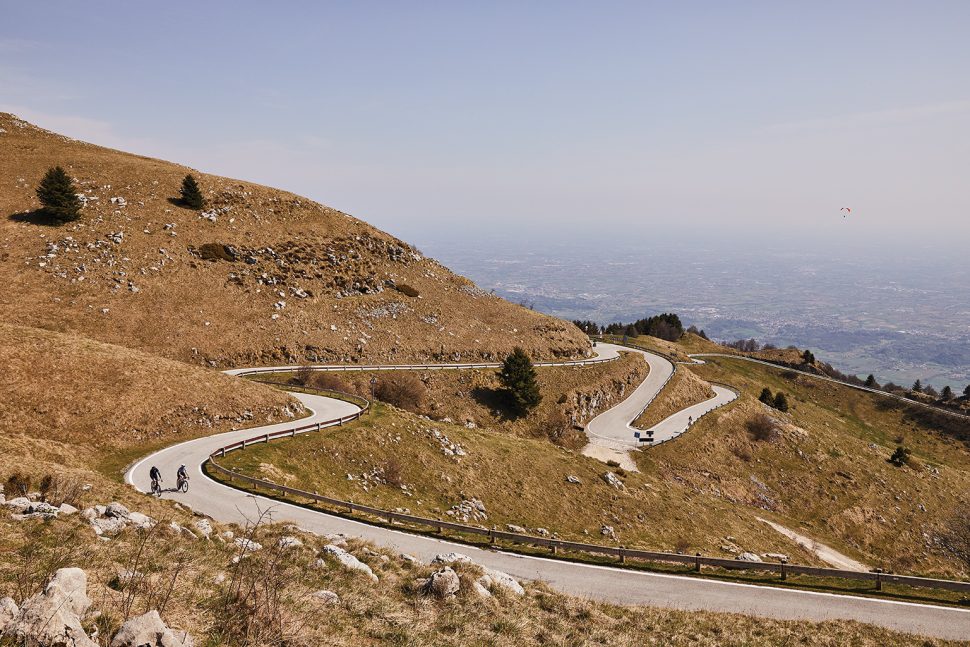
On the other side of the car park is the Monte Grappa military memorial. It’s enormous, spanning the 300 metre-plus length of the mountain’s peak. Taking off my cycling shoes, I walk up its snow-lined steps and read the inscription on the stone: ‘Monte Grappa you are my homeland’.
The line is a lyric from ‘La Canzone del Grappa’, a song written in 1918 celebrating Italy’s victory over Austria-Hungary at the Battles of Monte Grappa, when the Italians used the mountain to hold off an advance on Venice. The remains in the memorial belong to both Italian and Austro-Hungarian soldiers.
The memorial is the resting place of more than 20,000 soldiers who died in the First World War, mostly unidentified. Before it was built in 1935 they were spread between more than a hundred different cemeteries across the mountain.
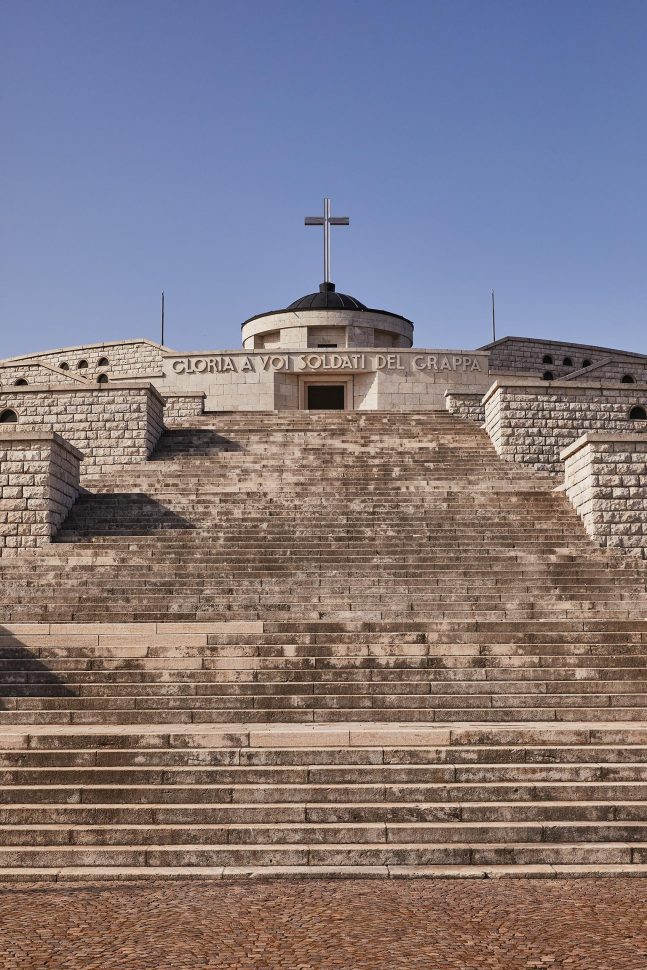
It may only be First World War soldiers remembered here, but the mountain has an important place in the history of the Second World War too. Members of the Italian resistance used Monte Grappa as a refuge from the Fascists, but the Nazis found and killed most of them, and the ones not killed in the conflict were hanged in Bassano.
The big come-down
The descent lasts nearly 30km down what is the easiest way up the mountain. The gradients are shallow enough that there’s still plenty of pedalling to be done, especially given that I need to keep my speed up to stay with Asja as she carves a perfect line down the slope.
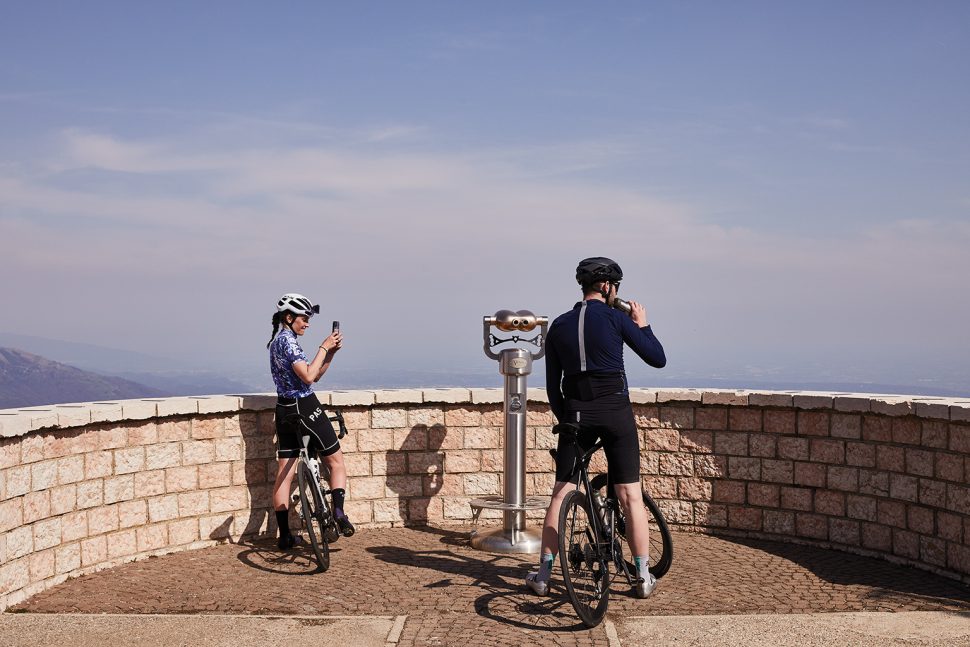
It’s over depressingly quickly considering how long it took us to get up, and there’s only 4km to Bassano from the bottom. We weave our way through traffic and ride along the Viale dei Martiri, which literally translates to ‘martyrs’ avenue’.
Each tree that lines this street commemorates one of those resistance soldiers hanged during the Second World War. It’s a long street; there are lots of trees. It’s a more subtle memorial but it hits harder.
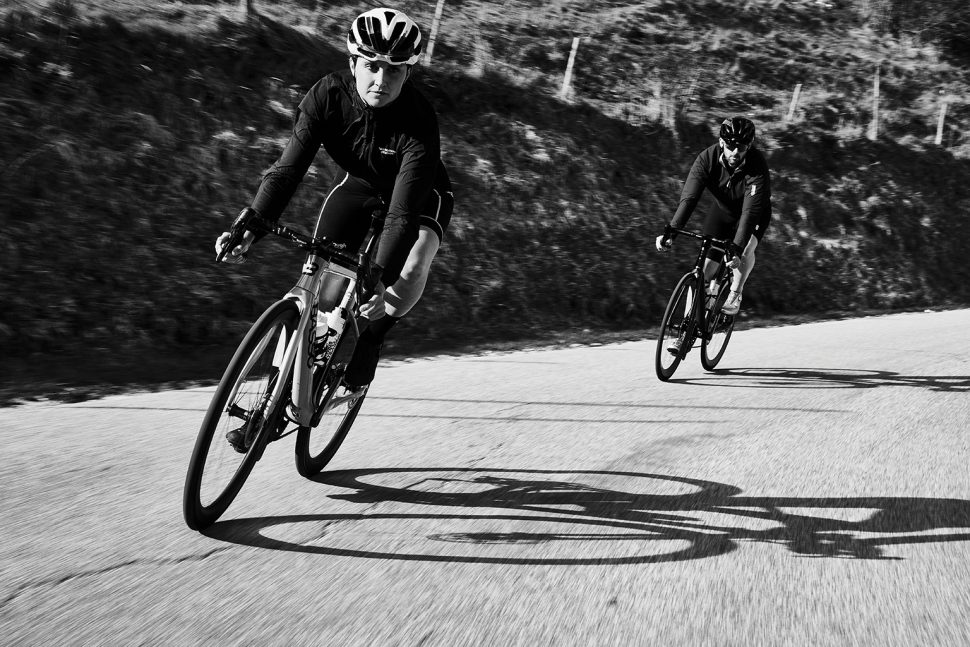
We head down to the river’s edge and past the Ponte Vecchio before turning into the town and onto Piazza Libertà, where our ride ends and where, at the Giro, a victor will be crowned. With just a processional stage to come, that will be the final battle of the three-week war, and the peloton’s double ascent will result in a lot of men suffering on the slopes of the Grappa, just like I did today.
But with the memories that the climb and this area hold, perspective will be easy to come by. It’s just cycling, it’s not real pain.
Saluti!
Bassano del Grappa is the prime region for a trio of classic beverages

Once you’ve ticked off Monte Grappa, it’s time for a three-course meal of alcoholic drinks.
First stop is Room, a bar in Bassano owned by none other than former Milan-San Remo winner and doping ban receiver Filippo Pozzato – you’ll even find that risqué advertisement on the wall of him naked but for a pair of Sidi shoes covering his manhood. More importantly, Room is renowned for its Americano, a cocktail of Campari, vermouth and soda water.
Moving to the next course, this part of Italy is prime Prosecco country, and the hills of Conegliano and Valdobbiadene where it originated are visible from Monte Grappa. While the official Prosecco region has been expanded to meet demand, the highest standard DOCG Prosecco area reaches into Asolo.
Finally we turn to the digestivo grappa, a form of brandy made from the leftovers of grapes during winemaking and which can be as strong as 60%. It doesn’t actually get its name from the local area – legend has it that grappa was invented by a Roman soldier who stole distillation equipment from Egypt and was rewarded with land to cultivate for his part in a war – but the Poli distillery in Bassano is an important grappa distillery and has a museum where you can see the process of making grappa and have a taste or two.
How we did it
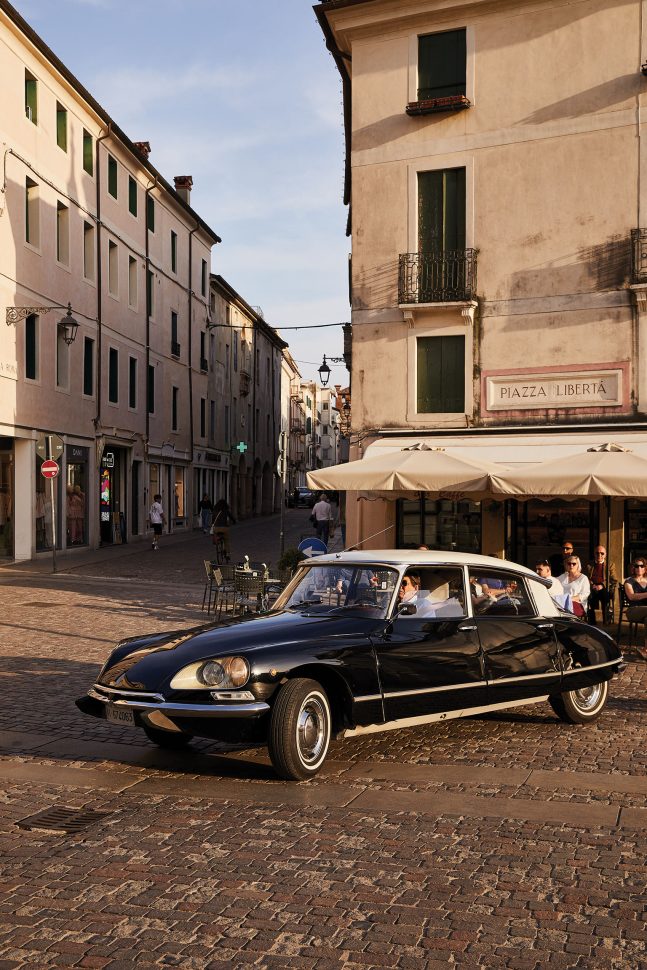
Travel
Cyclist flew from Stansted to Venice Marco Polo. Direct flights are also available from Birmingham, Bristol, Edinburgh and Manchester. From there we took a taxi to Bassano del Grappa, which takes just under an hour via the toll road. You can also get the train from Venice Mestre, and there’s a shuttle bus from the airport to the train station.
Accommodation
We stayed at the T-Rooms guest house, which is ideally located by the river just a short walk from the Ponte Vecchio and the main piazza, and cost €110 per night. It’s bike-friendly and, thankfully, person-friendly too. For info visit t-rooms.bassano-del-grappa.hotels-veneto.com.
Thanks
Many thanks to Monty, aka the King of Bassano, from Basso for helping to organise our trip, trusting us with his bike and sweet-talking the entire town on our behalf. Thanks to Asja for planning the route, riding with us and being very patient. Thanks to Monte Grappa expert Giovanni Mattiello for driving our photographer around. And further thanks to Alessandro and Leonardo Basso for letting them all skip work to help us out.
The post Big Ride: Monte Grappa, the giant of the Giro appeared first on Cyclist.